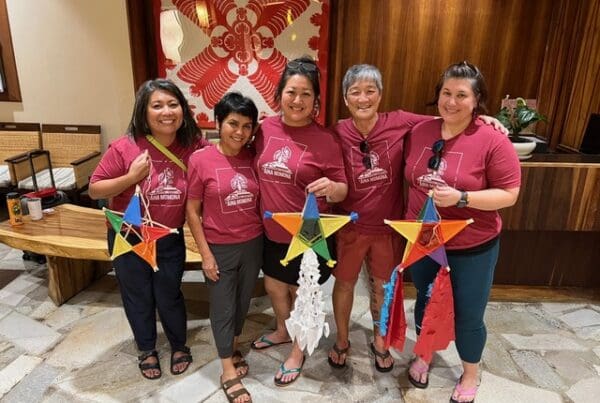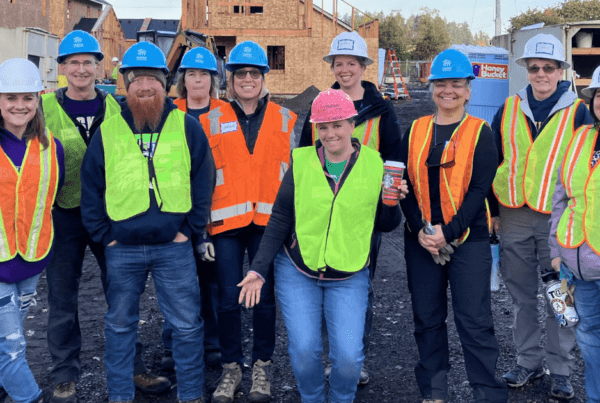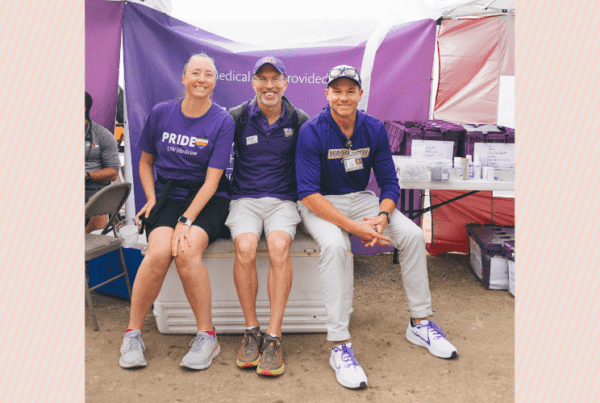Highlights | Grateful patients making a difference
- The Eye Institute’s Community Action Board has existed since 2011.
- The board is made up of grateful patients and community members.
- The board works with the community to create programs that will fund care, research and training for blinding eye disease.
- Among their many accomplishments, the board helped raise $75 million during a recent campaign.
Grateful patient philanthropy is one of the most powerful ways medical research, clinical care and medical education can be funded to improve patients’ lives. At the UW Medicine Eye Institute, many committed, grateful patients who want to help support the Institute’s mission are involved in a unique, robust way: through a community action board.
In its eleventh year, the Eye Institute Community Action Board (CAB) is a team of grateful patient donors, community members, emeritus faculty and ophthalmology professionals who work together to fund projects that will help clinicians at the Eye Institute and faculty in the Department of Ophthalmology advance their work to treat blinding eye disease.
A unique and rewarding partnership
The action board was founded and is overseen by Russell Van Gelder, MD, PhD, director of the Eye Institute, in partnership with UW Medicine Advancement. Now, Advancement partners Katie Bunten and An Tran work with the board.
Despite this, the board is independent and driven by the community, Van Gelder says.
“It’s not only a fundraising board. We do fundraising and ask for the board’s assistance, but they’re really our community sounding board. If we’re not serving the community, the board lets us know how we can do that better,” he says.
There are currently 26 board members, led by the incoming board chair Rahel Tesfahun, and 24 living emeritus members. During the pandemic, they lost two members to COVID-19 and faced challenges trying to meet virtually instead of in person.
But that hasn’t stopped them — the group typically meets twice a year, and their next meeting will take place in October. Along with meeting biannually, members serve as eye health advocates in their own communities and help host events to educate others about the Eye Institute’s work.
“There are few more passionate groups of people than grateful patients. But there is something special about the CAB: Their deep commitment to supporting life-changing research is unmatched, and they genuinely enjoy being in community with one another,” says Bunten.
Everyone involved on the board works hard and is committed to the group’s goals. The partnership works because of the large group of grateful patients, the robust research program and the strong teamwork between Van Gelder and Advancement.
The impact of blinding eye disease
The board’s work is needed now more than ever. While blinding eye disease is common — more than 4 million adults in the United States have some form of it or are legally blind — there are also more treatments available and research programs in progress now than at any point in history.
Each year, the Eye Institute providers see 75,000 patients and perform 5,000 surgeries; the most common single surgery in this country is cataract surgery, Van Gelder says. Ophthalmology receives the second-largest amount of National Eye Institute research dollars and also offers the only nonmilitary residency program in the Washington, Wyoming, Alaska, Montana and Idaho (WWAMI) region.
“Faculty don’t get paid to teach, and our clinical care is a break-even situation. We can cover our costs but we don’t generate a margin, so if we want to grow — recruit new faculty, start new programs, expand space — we need to partner with the community to do that, which is where Advancement and the CAB come in,” Van Gelder explains.
Through advanced treatments for many eye conditions, ophthalmologists can now prevent vision loss and restore vision much more often. This is important because as many of us age, we will develop some form of blinding eye disease, such as glaucoma or macular degeneration, Van Gelder points out.
Making a difference in the community
The work of the board touches practically every initiative the Eye Institute undertakes to benefit the community, from outreach efforts to summer lab tours with underserved students to medical student recruitment.
For Jack Jolley, outgoing board chair, an Eye Institute patient for 12 years and board member for 11, one of the most rewarding projects he has worked on, along with other board members and members of the community, was implementing a program at Harborview Medical Center where used eyeglasses can be donated and then refurbished by specialists and given to people in the community who need them but can’t afford to pay.
When the action board members initially came up with the idea, there was a law in Washington state that wouldn’t allow for used glasses to be repurposed. The team worked with Washington state representatives to get the law changed so the program could begin.
“Last year, we met a young woman who had significant eye issues but had her heart set on getting a job. She had been working on her resume and practicing interviewing, but during interviews she couldn’t do the tests she was given because she couldn’t see them clearly. We gave her the glasses she needed and she got a job,” Jolley says.
Jolley and his wife Pam recently committed to endow a $100,000 general ophthalmology fellowship. Other projects board members have funded and worked on include attracting talented new faculty; funding innovative research projects led by junior faculty; supporting the work at the Karalis Johnson Retina Center; holding community events and symposiums about specific eye conditions; and raising funding to expand opportunities for medical students across the country to complete ophthalmology rotations at UW.
“The goal is incremental and cumulative, it’s not just any one person. Some people give more, some less, but the idea is that people give back to the community and Russ creates that strong bond equally across the board. There is a tremendous sense of a team who has a mission and is pulling together,” Jolley says.
During Advancement’s recent Accelerate campaign, the department hoped to raise $50 million over ten years for the Eye Institute. Instead, they surpassed that goal, earning $75 million in the same timeframe — in large part due to the community action board.


